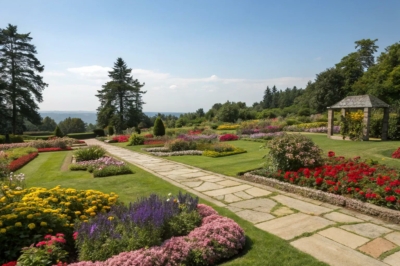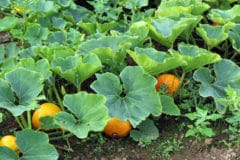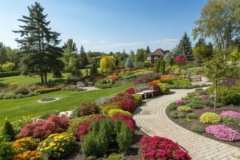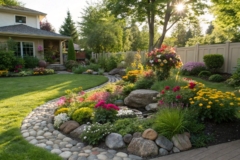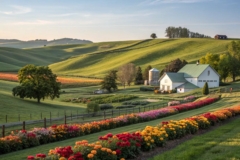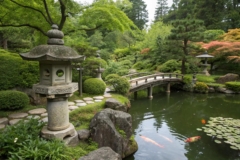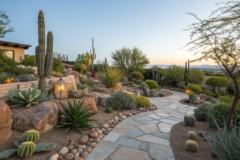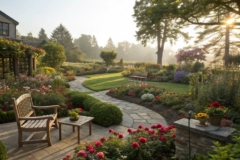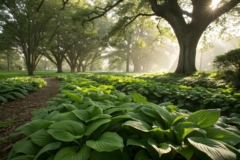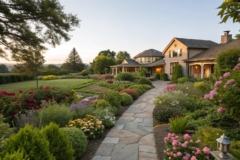1. Edible Landscapes
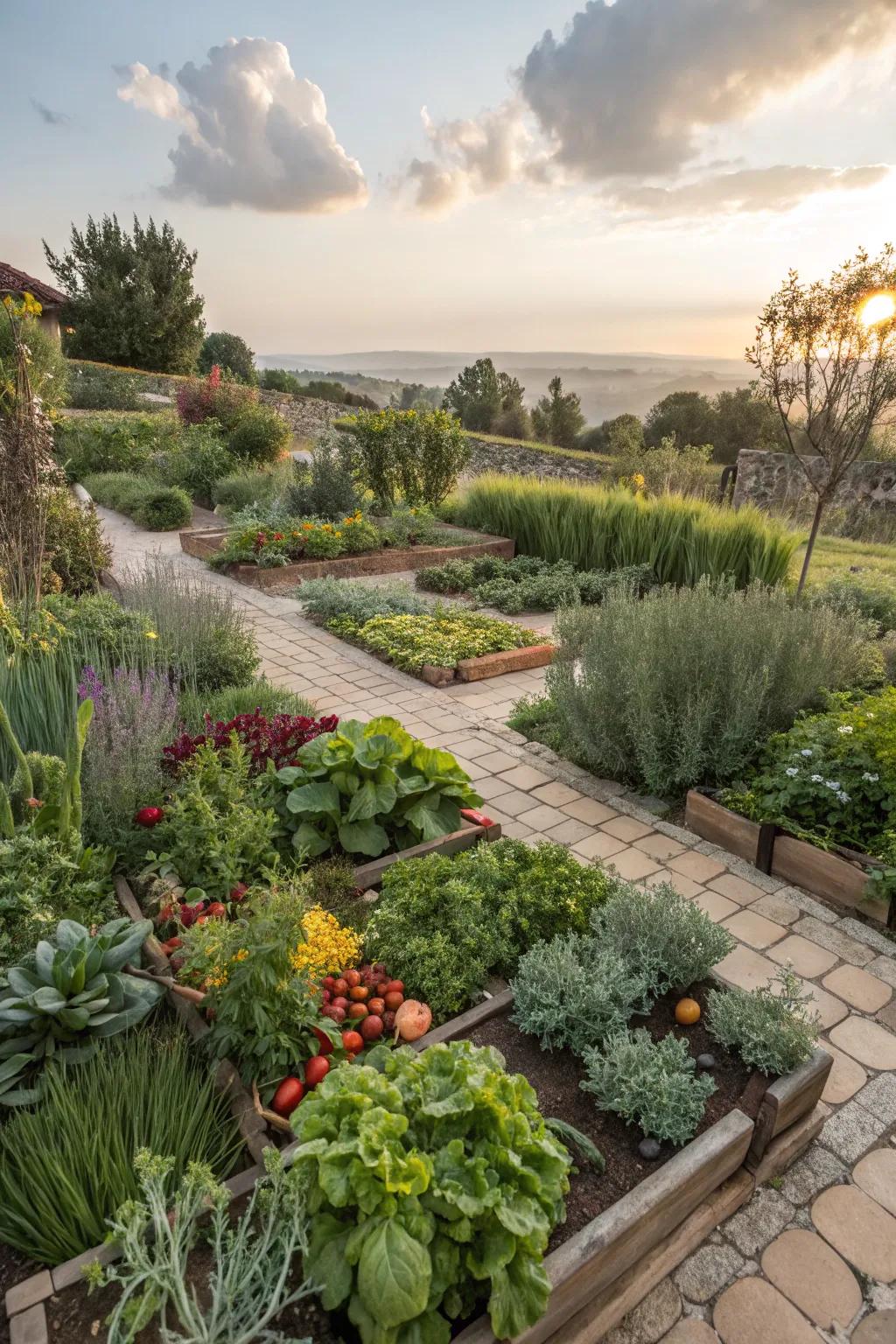
Blend beauty and utility by incorporating edible plants like herbs and vegetables. My kitchen garden is not only practical but also a feast for the eyes.
Possibly handy products:
- Raised Garden Bed Kit: Elevate your garden with a durable, easy-to-assemble raised bed for diverse plant cultivation.
- Herb and Vegetable Seed Starter Kit: Kickstart your garden with this seed starter kit featuring a variety of herbs and vegetables.
- Garden Irrigation System: Effortlessly maintain your garden with a customizable irrigation system ensuring optimal watering.
2. Fragrant Gardens

Surround yourself with scent by planting aromatic flowers and herbs. My garden’s fragrance, especially in the evening, is simply intoxicating.
Check if these fit your needs:
- Lavender Plants: Enhance your garden with lavender plants for a soothing and fragrant touch.
- Herb Starter Kit: Start your own aromatic herb garden effortlessly with this beginner-friendly starter kit.
- Jasmine Flower Seeds: Grow jasmine to fill your garden with its classic and enchanting fragrance.
3. Variety of Plant Heights
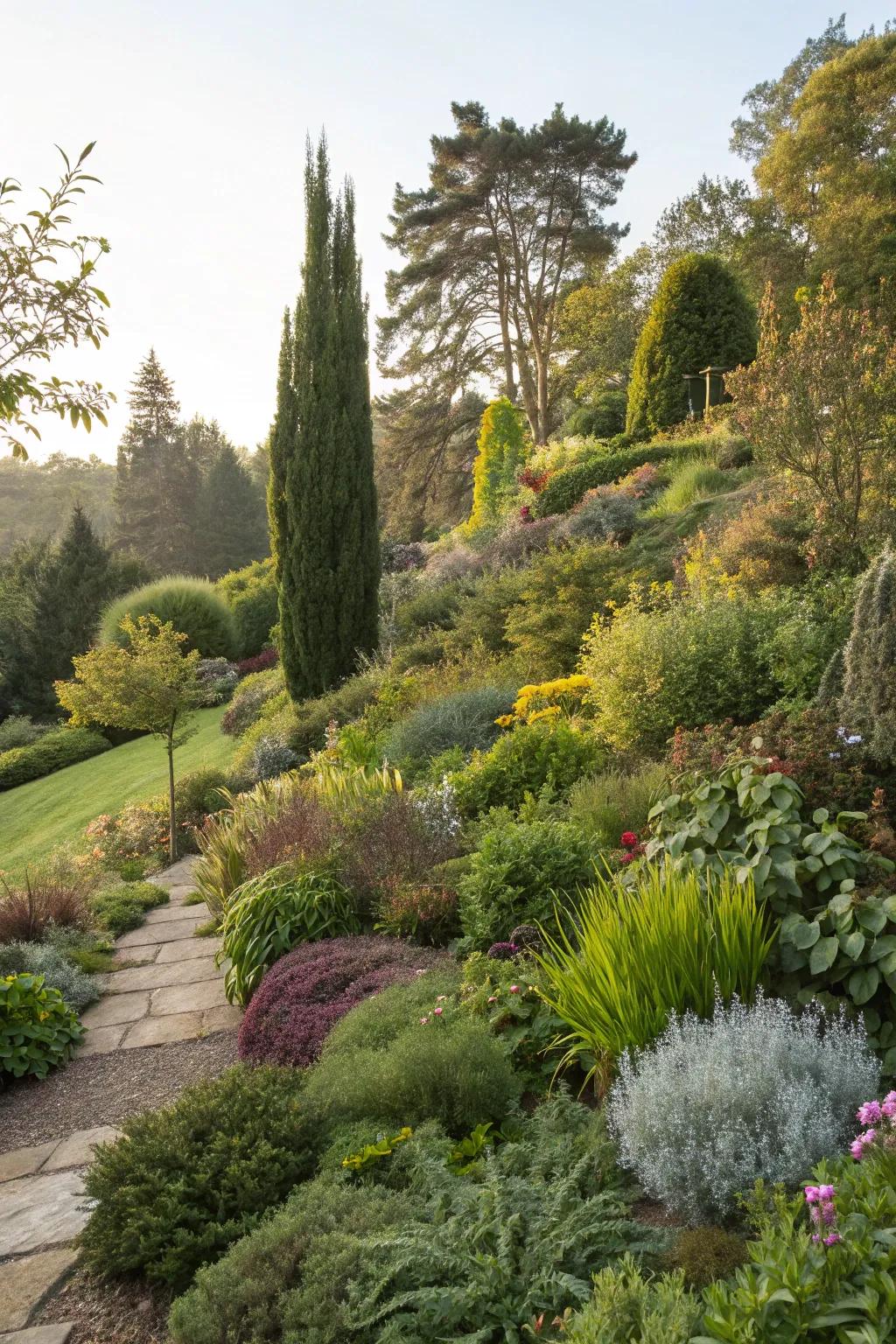
Mix low, medium, and high plants for visual interest and depth. My garden’s evergreen backdrop with layered plant heights creates a dynamic view from every angle.
Might be a good match:
- Adjustable Garden Trellis: Heighten your plants with an adjustable trellis for added dimension and growth support.
- Tall Outdoor Planters: Elevate your garden design with tall planters, adding striking vertical elements effortlessly.
- Layered Cast Iron Urns: Create visual depth using layered urns for varied plant heights and a classic touch.
4. Water Features
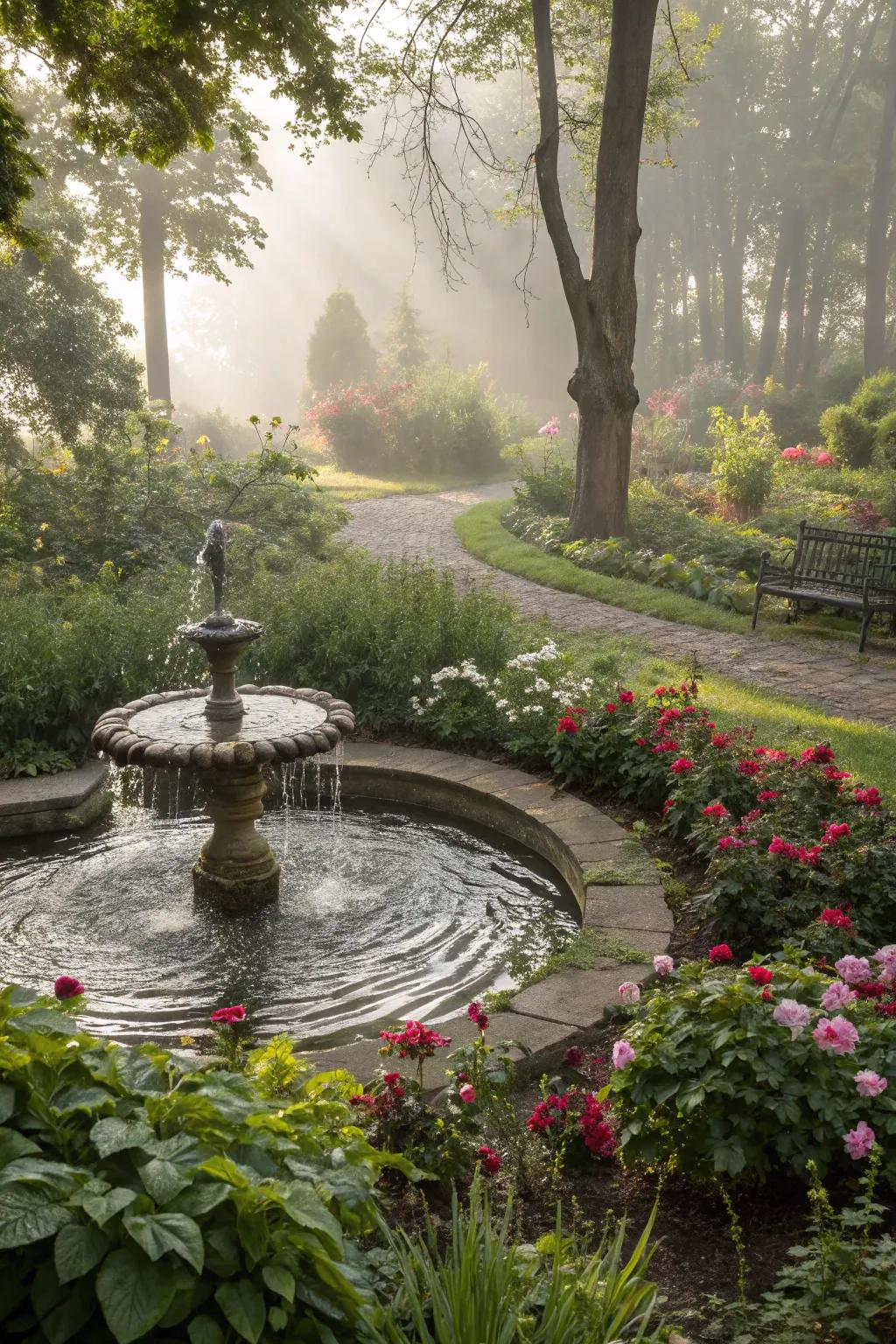
Introduce a water feature like a small pond or fountain to bring tranquility to your garden. The gentle sound of water adds a peaceful ambiance to my outdoor space.
You might give these a try:
- Outdoor Garden Fountain: Enhance your garden’s ambiance with this elegant outdoor fountain, creating a serene, natural setting.
- Solar Water Pump Kit: Add an eco-friendly touch to your water feature with this solar-powered pump for continuous flow.
- Decorative Garden Pond Kit: Introduce tranquility to your garden with this easy-to-install decorative pond kit.
5. Rock Elements

Incorporate rock elements like boulders to create natural borders or focal points in your garden. I use them to frame my flower beds, adding a rustic charm.
Possibly helpful picks:
- Natural Landscaping Boulders: Enhance your garden’s aesthetics with natural boulders for rustic charm and visual interest.
- Garden Stone Pathway Kit: Create pathways and borders effortlessly with a versatile garden stone pathway kit.
- Decorative River Rocks: Use decorative river rocks to add texture and contrast to your flower beds.
6. Cozy and Inviting Spaces
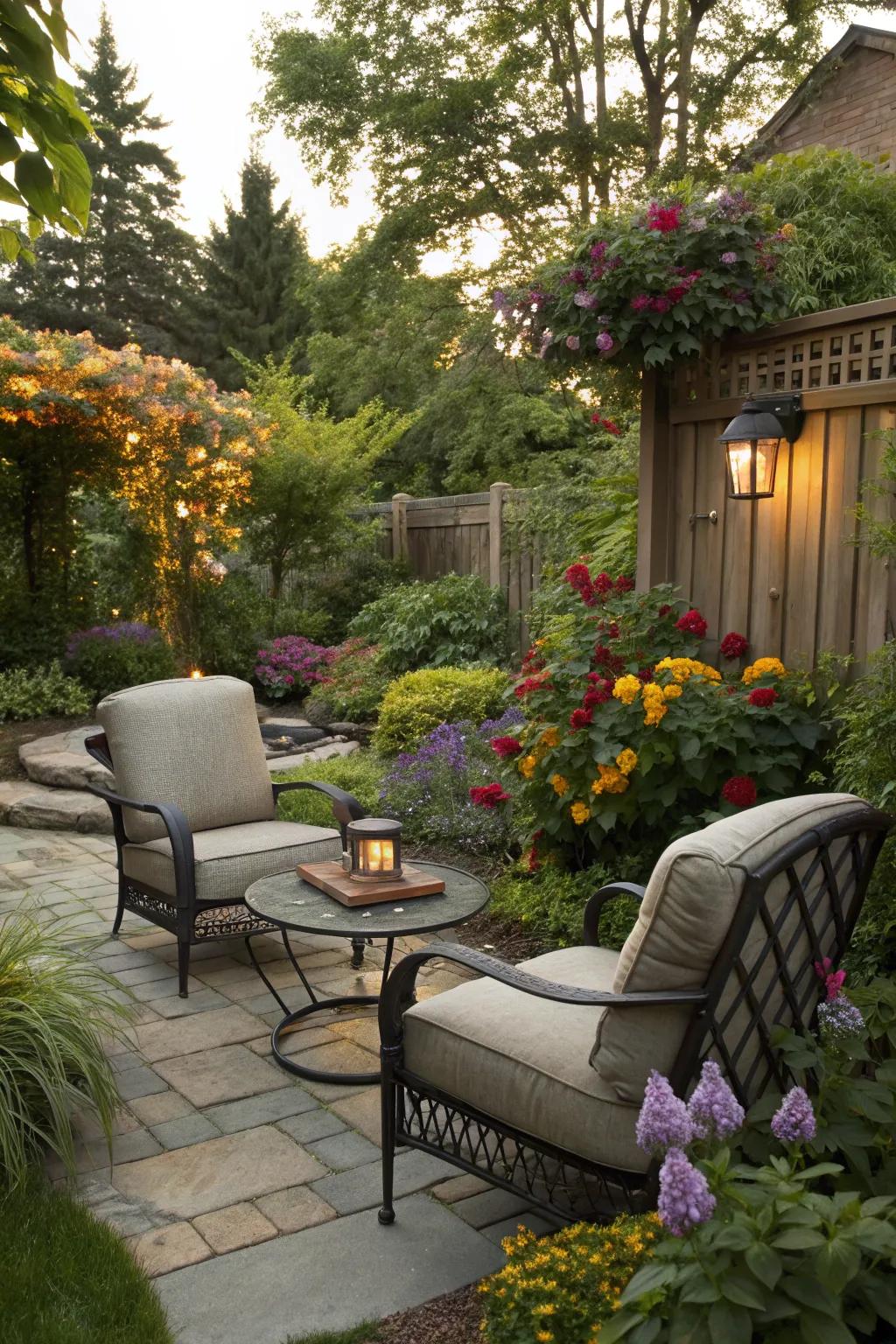
Create cozy spaces with seating areas surrounded by lush plantings. My favorite spot is a bench nestled among fragrant blooms, perfect for unwinding.
Some handy options:
- Outdoor Garden Bench: Enhance your garden retreat with a charming bench, perfect for unwinding among fragrant blooms.
- Solar-Powered Garden Lights: Illuminate your garden with solar-powered lights, adding warmth and ambiance to your evening relaxation.
- All-Weather Patio Furniture Set: Create a cozy nook with plush seating for tranquil moments in your lush garden escape.
7. Mixed Shrubs and Trees
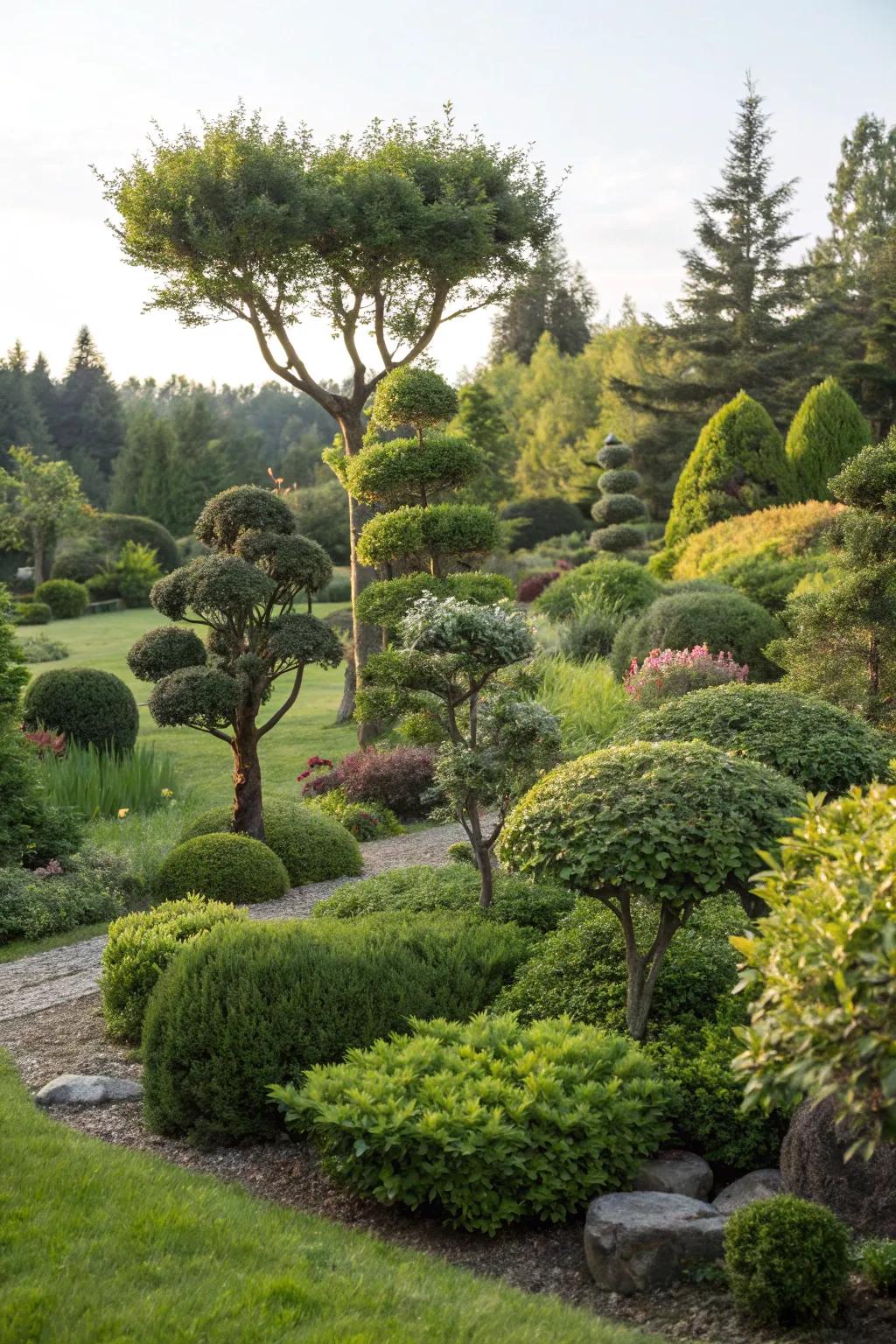
Combine different sizes and types of shrubs and small trees to add depth to your landscape. My backyard is a mix of evergreens and flowering shrubs, providing year-round interest.
A few helpful options:
- Evergreen Shrub Collection: Enhance your garden with evergreen shrubs for continuous lush greenery throughout the year.
- Flowering Shrubs Assortment: Add vibrant color and fragrance to your landscape with a variety of flowering shrubs.
- Dwarf Tree Varieties: Incorporate depth with small trees perfect for tight spaces and diverse landscape designs.
8. Pathways and Edging

Define your garden with stone or mulch pathways, adding texture and guiding the flow of your landscape. I love the crunch of gravel underfoot as I wander through my garden.
Explore these options:
- Garden Pathway Stones: Enhance your garden’s beauty with durable stones for a natural and elegant pathway.
- Decorative Garden Edging: Define your garden beds beautifully with easy-to-install decorative garden edging.
- Crushed Gravel for Pathways: Experience the satisfying crunch of gravel underfoot while strolling through your garden.
9. Seasonal Colors
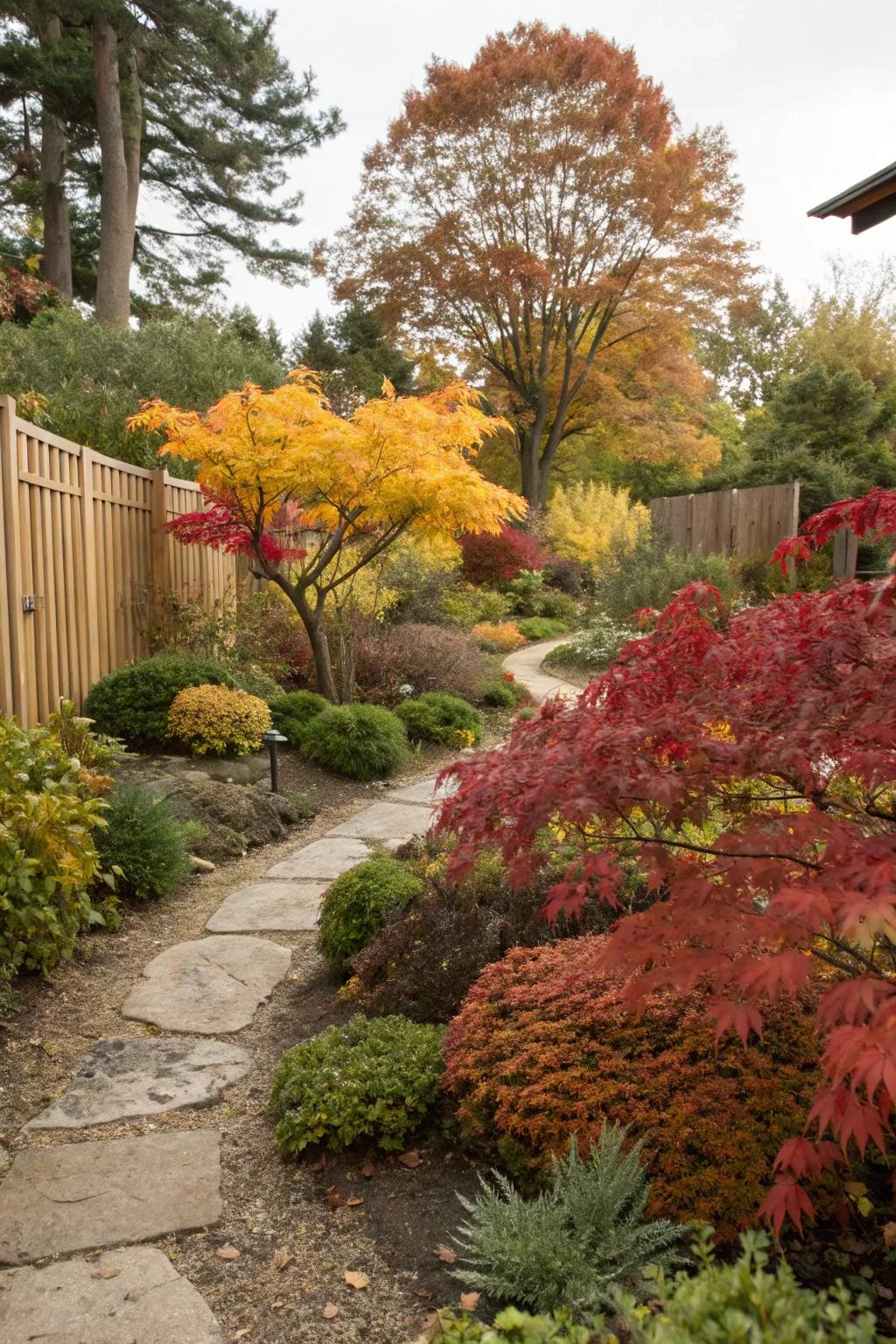
Choose plants that offer seasonal interest with their changing flowers or foliage. I eagerly await the autumn hues that transform my garden into a warm tapestry.
Useful items to consider:
- Japanese Maple Tree: Enhance your garden with vibrant red foliage that delivers stunning autumn beauty and elegance.
- Perennial Flower Mix: Create a colorful garden tableau with perennial flowers that change hues each season.
- Fall Foliage Shrubs: Add depth to your landscape with shrubs that transform into a rich tapestry of fall colors.
10. Succulent Gardens
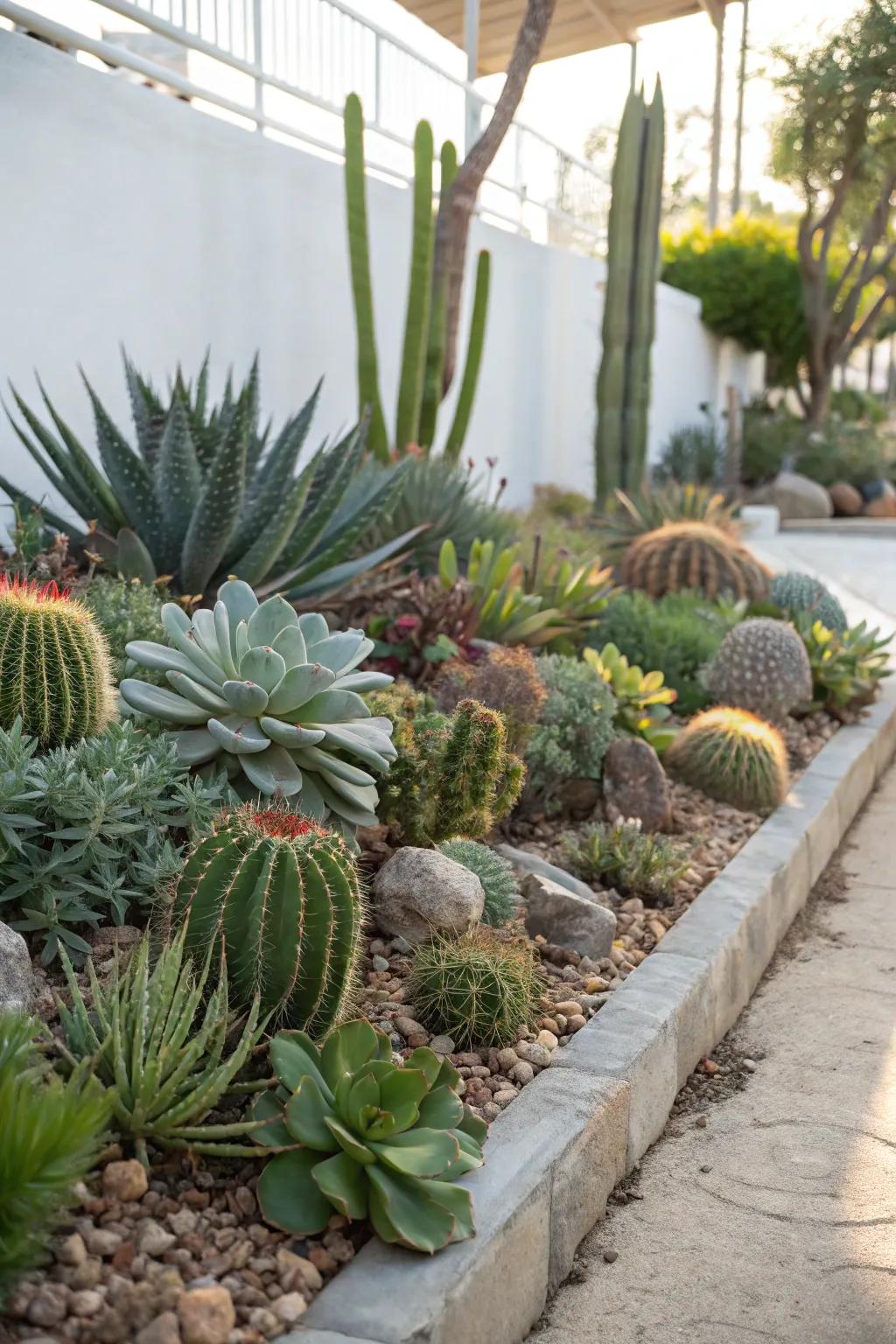
Create a low-maintenance landscape with a variety of succulents. Their unique shapes and textures make my succulent garden a conversation starter.
A few suggestions:
- Assorted Succulent Plant Pack: Enhance your garden with a diverse assortment of hardy succulents, ready to thrive with minimal care.
- Cactus Potting Mix: Support succulent growth with specialized potting mix, ensuring optimal drainage and aeration.
- Decorative Pebble Stones for Garden: Add texture and style to your garden with natural pebbles, perfect for succulent arrangements.
11. Sustainable Plantings
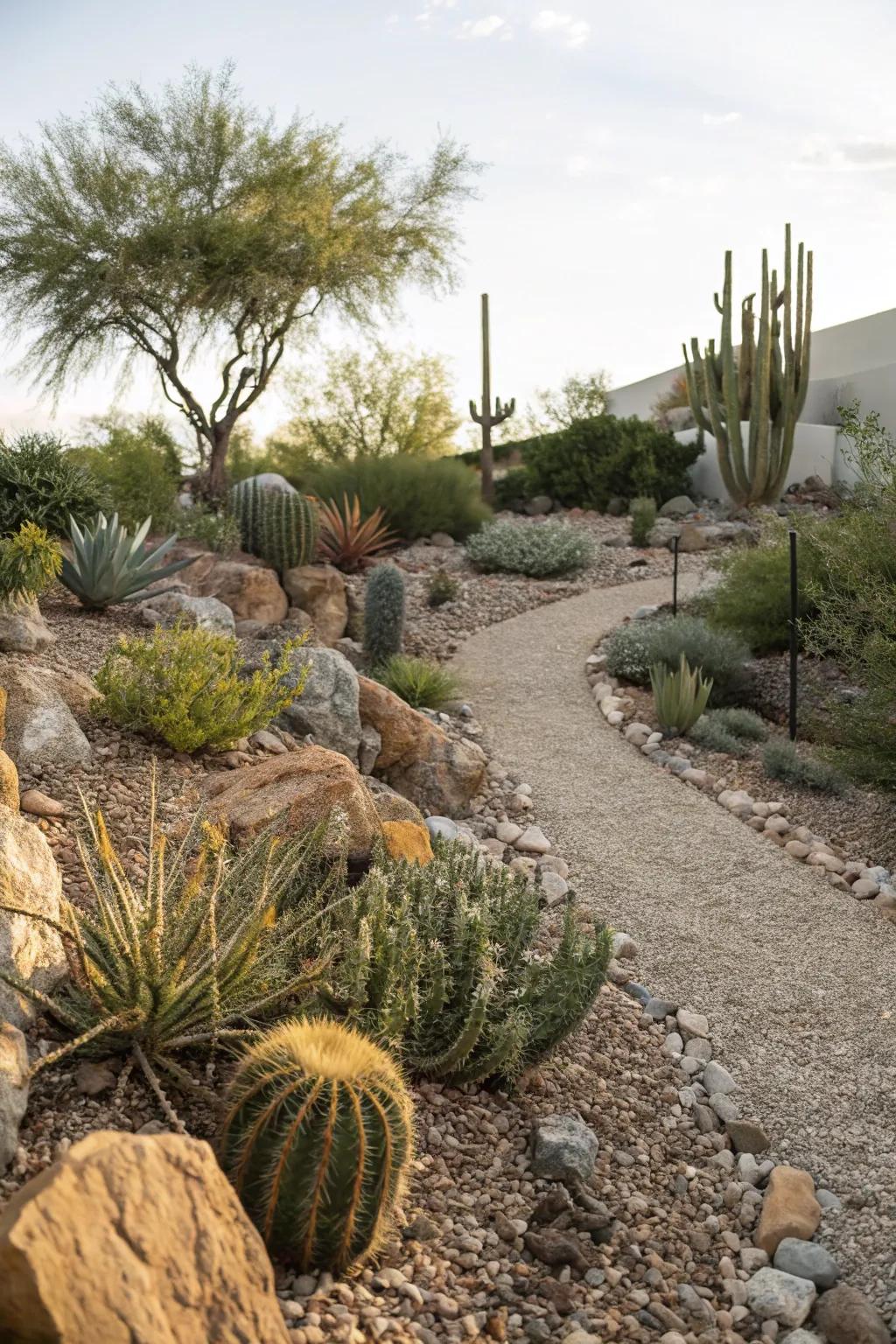
Opt for drought-tolerant plants to create a sustainable landscape. My xeriscape garden thrives with minimal water, saving resources without sacrificing beauty.
Try these:
- Drought-Tolerant Plant Seeds: Cultivate a thriving xeriscape garden with these easy-to-grow, water-saving plant seeds.
- Organic Mulch: Conserve soil moisture and enrich your garden sustainably with organic mulch.
- Drip Irrigation Kit: Install this efficient drip irrigation kit to automate watering and conserve resources.
12. Shade Gardens

Use shade-loving plants to turn a shady spot into a lush retreat. My shade garden is a cool haven during the hot Texan summers.
These products might help:
- Shade-Loving Perennial Plant Seeds: Discover shade-loving perennial seeds to bring year-round beauty to your lush retreat garden.
- Decorative Garden Pathway Stones: Enhance your garden’s charm with natural stones, creating inviting and durable walking paths.
- Outdoor Solar Garden Lights: Illuminate your shady garden with eco-friendly solar lights for a magical evening atmosphere.
13. Colorful Flower Beds
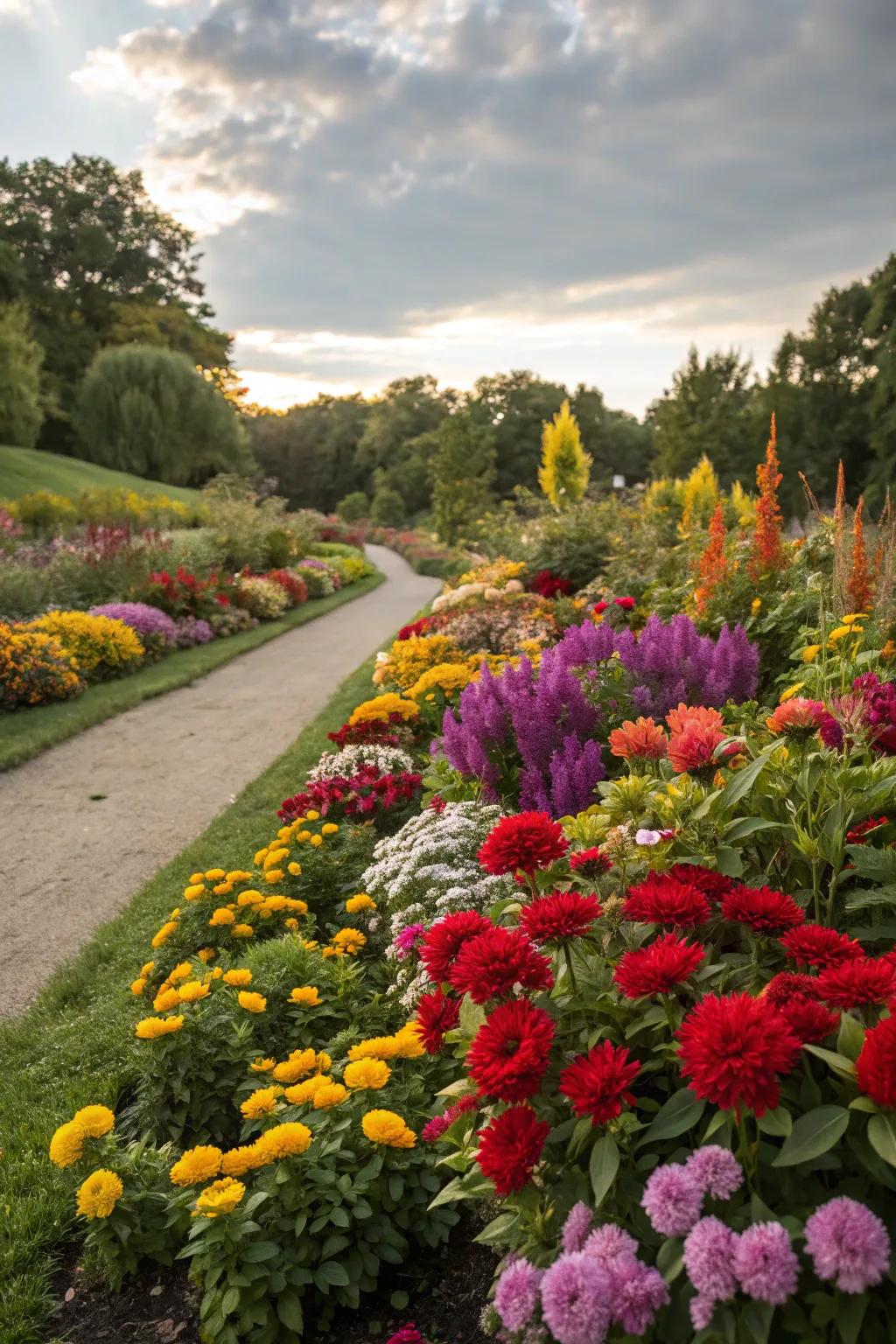
Brighten up your garden with colorful flower beds arranged in eye-catching patterns. I love mixing perennials and annuals for a splash of color that lasts throughout the growing season.
Items that may come in handy:
- Assorted Perennial Flower Seeds: Transform your garden with perennial seeds for vibrant, lasting color all season long.
- Colorful Annuals Seed Pack: Brighten your flower beds with annuals for a fresh splash of color every year.
- Garden Bed Edging Kit: Define your flower beds with edging kits for a clean, professional look.
14. Neat Lawns
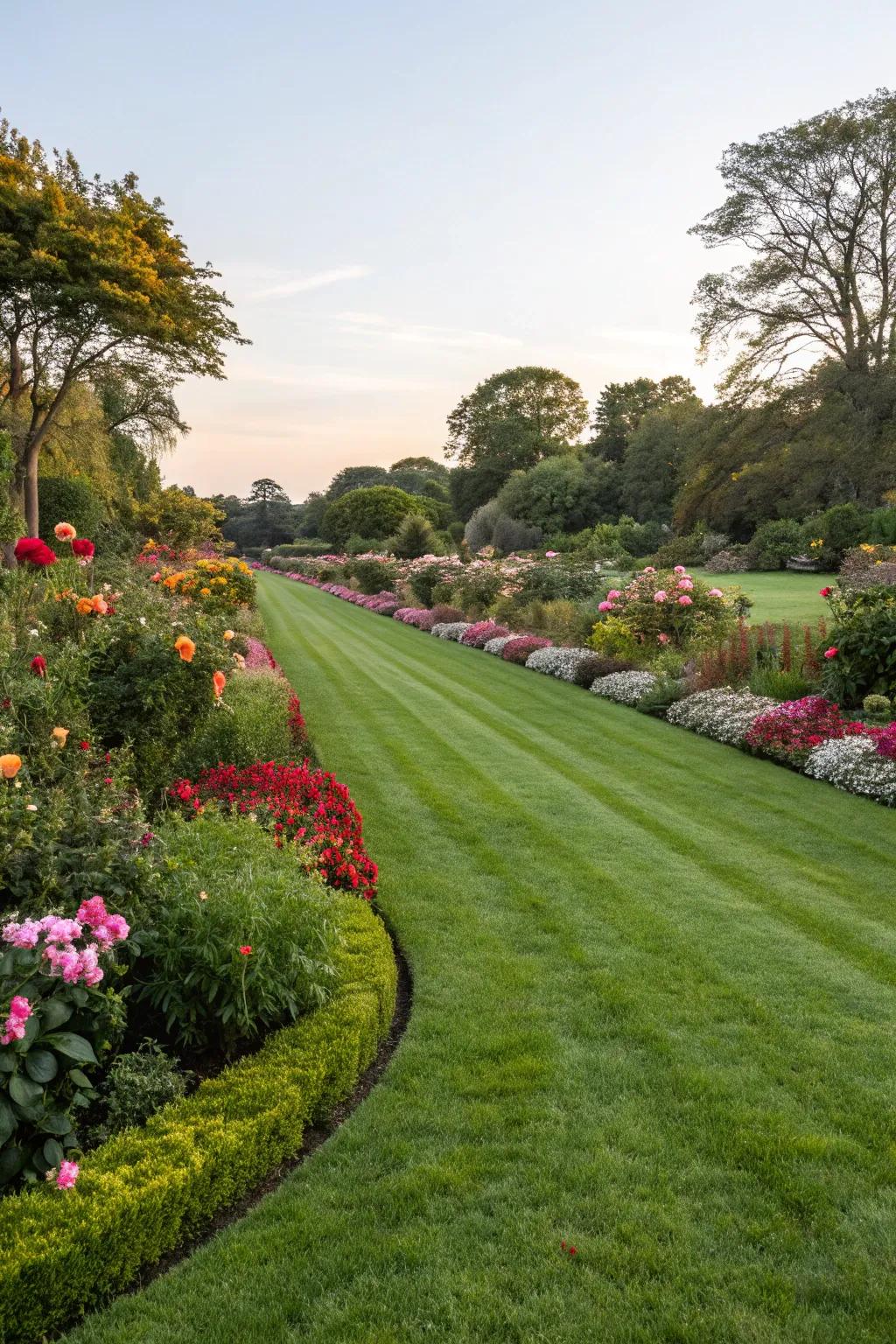
A well-maintained lawn provides a beautiful contrast to colorful borders. I take pride in my luscious green lawn, which serves as a peaceful backdrop for my garden.
May just do the trick:
- Electric Lawn Mower: Keep your lawn pristine with ease using an efficient electric lawn mower for a lush finish.
- Lawn Fertilizer: Enhance your lawn’s health and color by applying quality lawn fertilizer regularly.
- Garden Hose with Sprayer: Ensure your lawn stays hydrated and vibrant with an adjustable garden hose and sprayer.
15. Vertical Gardens

Maximize space by going vertical with wall-mounted planters or trellises. I love how my vertical garden adds dimension and lush greenery to my patio.
These products might be useful:
- Wall-Mounted Planter Set: Transform your patio with easy-install wall planters, adding vertical greenery effortlessly.
- Metal Trellis for Climbing Plants: Enhance your garden space with durable trellises, perfect for supporting climbing plants.
- Vertical Garden Hanging Pockets: Install these versatile hanging pockets for a lush vertical garden on any wall.
16. Themed Gardens
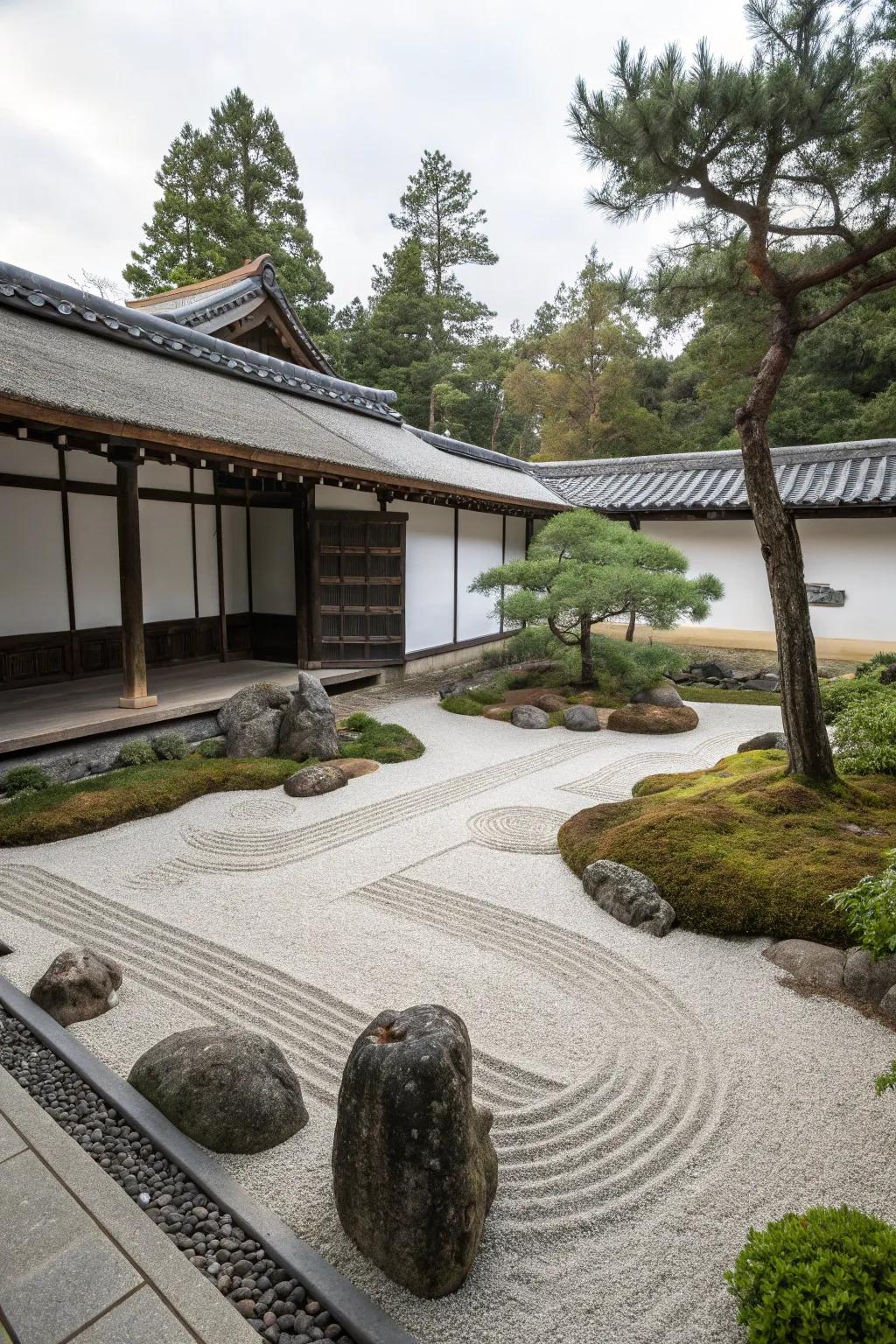
Design a themed garden, like a Japanese Zen or Mediterranean oasis. My Zen garden, with its raked gravel and sparse plantings, is my sanctuary for meditation.
Products that could assist:
- Zen Garden Rake Set: Enhance your Zen garden with rakes to create calming patterns in gravel effortlessly.
- Japanese Stone Lantern: Add traditional charm to your Zen garden with an elegant Japanese stone lantern.
- Decorative Bonsai Tree: Introduce tranquility with a decorative bonsai tree, perfect for meditative spaces.
17. Miniature Gardens
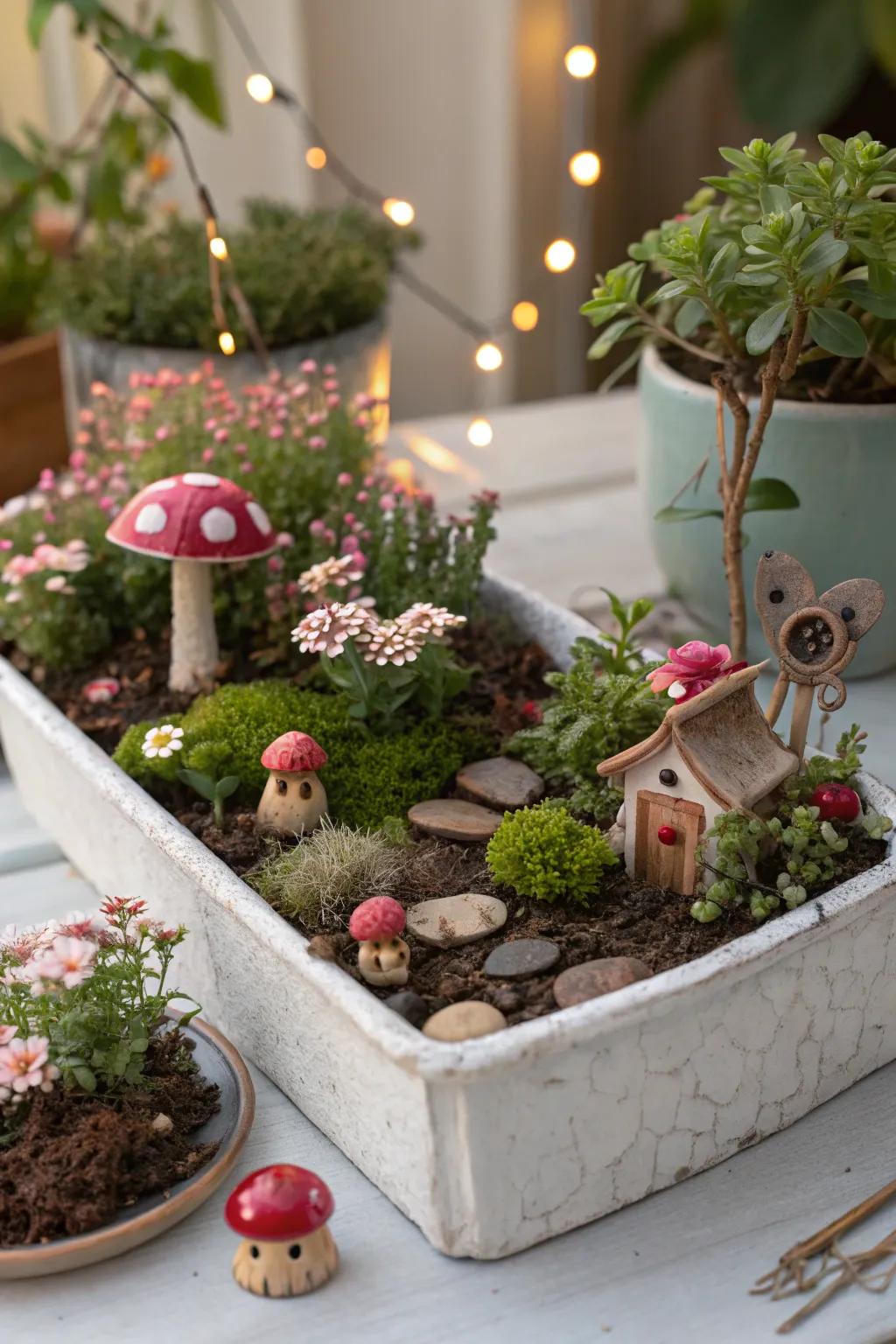
Create a miniature garden in a container or small patch for a whimsical touch. My fairy garden, complete with tiny accessories, adds a playful charm.
Give these a look:
- Fairy Garden Accessories Kit: Transform your garden with charming accessories for a magical and whimsical miniature world.
- Miniature Garden Gnome Set: Add delightful gnomes to your garden for a touch of whimsical character and fun.
- Decorative Pebble Pathway: Create inviting pathways in your miniature garden with realistic and decorative pebble pathways.
